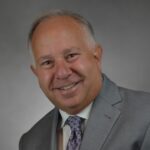Using Drones for RGB and Thermal
Imaging Tower Inspections
Presented by:
Paul Shulins, Shulins’ Solutions
Session Description Towers, broadcast transmission lines and antennas are subject to extreme environmental conditions, including vibrations, moisture, rain, sunlight, and wear and tear. Traditionally, tower inspections are performed by trained specialists who carefully climb a tower to inspect its physical elements and make repairs. While nothing can fully replace a physical inspection, we’ll take a look at how small, unmanned aircraft system (sUAS) drone inspections offer new technology and capabilities – including thermal imaging – allowing for inspections that can be made more frequently, less expensively, and in many cases with more detail than a physical inspection, often finding problems not obvious from the ground. Get real-world examples of the benefits of sUAS drone inspections. Presenter Bio Paul Shulins is President of Shulins’ Solutions, a radio and TV broadcast consulting firm based in Andover, MA, specializing in remote control solutions, studio design and construction, antenna protection systems and ratings metrics. Previously, Paul joined Burk Technology as Vice President and Chief Technology officer in 2017. Prior to joining Burk Technology, He had been the Director of Technical Operations for Greater Media’s Boston, MA, five FM radio stations for 29 years. Paul has been working as a Radio Chief Engineer for 40 years. He was responsible for the planning and day-to-day management of one of the first major market studio consolidations in 1998 for Greater Media’s Boston radio stations. He is a member of the Society of Broadcast Engineers and has held an SBE Radio Engineer Certification since 1982. Paul is also a member of the IEEE Broadcast Technology Society and has co-chaired the BTS Broadcast Symposium for several years. Paul has presented numerous papers at the IEEE Broadcast Symposium, the NAB Convention, and the NAB Radio Show. He has also been a frequent contributor to Radio World Magazine and authored several chapters in the 11th edition of the NAB engineering handbook. Paul has also served as an elected member of the IEEE Broadcast Technology Society’s administrative committee for three years. Today he is the Vice President for IEEE’s Broadcast Technology Society. 
Thank you to our conference sponsors:

